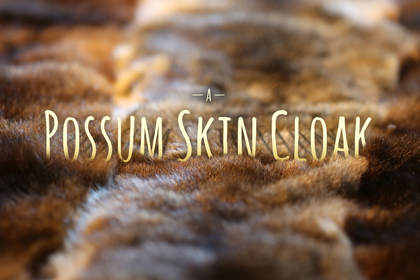Our preservation team has put together a list of handy hints on preserving your own family collection for future generations.
Most people start researching their family with the documents and photographs in their own family collection.
Family documents typically include birth and marriage certificates, letters, greeting cards, diaries and journals. Family photographic collections can include historic studio portraits, more modern film snaps and digital images.
Do
- Always have clean hands when working with records or photographs
- Use a pencil, not a pen when working around records or annotating records
- Use 'copy safe' document sleeves, zip lock sandwich bags or oven bags. These and other products marked PP (polypropylene), PE, LDPE or HDPE (polyethylene, low or high density) or PET (polyethylene terephthalate or polyester) are suitable
- Torn items should be kept together by placing all the pieces in a plastic sleeve. These can then be photocopied or scanned as a reference copy.
- Keep your records and photographs in a protective box to stop dust, light and small amounts of water, getting on your records
- Keep your records and photographs in a cool, dry location
- Check your records and photographs regularly for insect or mould attack.
Don't
- Don’t eat or drink around your records and photographs
- Don’t use sticky tape to repair torn records and photographs
- Don’t store photographs or documents in self-adhesive ('magnetic') albums
- Don’t use PVC (polyvinyl chloride) plastic (this is the common type that has that very typical plastic smell and a slightly greasy feel to the surface)
- Don’t expose your records and photographs to long periods of bright light (this can fade the ink and yellow the paper)
- Don’t store your records and photographs near a water source (like the laundry or a leaky window)
- Don’t store your records and photographs on the floor (in case of a flood).
Storage for your home archive
Storing your personal items can be done effectively at home if you follow some basic steps.
Items should be kept in cool, dry, dark conditions. The optimum storage conditions for paper based items are 20°C at 50% relative humidity.
Paper based items should be housed in archival quality storage containers. These can be purchased from specialist archival suppliers, but suitable less expensive alternatives can also be used.
Below are some suggestions for a range of storage options:
Inexpensive
- zip lock sandwich bags
- oven bags
- 'copy safe' document sleeves
- expanding document file
- ring binder with a cardboard cover
- acid-free pocket style photo album
- sturdy cardboard box with a lid
More expensive
- archival quality photocopy paper for inserts and interleaving
- plastic 'display books'
- polypropylene expanding document file (may have 'PP' and recycling number 5 stamped on it)
- polypropylene ring binder (may have 'PP' and recycling number 5 stamped on it)
- sturdy plastic crate with a lid
Professional
- Acid-free and photo-safe folders and wallets
- Acid-free and photo-safe storage boxes in cardboard or polypropylene
- Acid-free and photo-safe albums in cardboard or polypropylene suitable for documents, photographs and negatives and slides
- Polyester ('Mylar' or 'Melinex') document sleeve
Storage environment
The area you use to store you records should be cool and dry. The cooler the better, however, cold temperatures often mean damp conditions, which need to be avoided. High temperature and moisture levels will cause documents to deteriorate rapidly. The ideal conditions for paper storage are around 20°C and 50% relative humidity. Avoid storing documents in the attic, the shed or under the house. Use an area inside the house that stays as cool as possible but doesn’t get damp and generate mildew. A space with no external walls is best – like a hall closet or linen cupboard.
The advantage of this kind of space is that changes in temperature and humidity are less dramatic – the surrounding rooms act as a buffer, smoothing out the highs and lows in the outer rooms. Of course, these kinds of cool, quiet places are also where insects like to live. If you use these spaces, you should check every few months to be sure silverfish or other insects haven’t moved into your collection. Silverfish will eat the paper and any starch based adhesives that might be on your records. Instead of using moth balls or insect strips, store your collection in something that insects can’t get into, like a box with a tight fitting lid, or zip lock plastic bags.
'Acid-free' does not necessarily mean 'safe for photographs'. Photographs have different requirements to paper, so although acid-free materials are a good place to start they may not be the best thing you can buy. Papers and plastics that have proved safe for photographs can be expensive, and reputable suppliers of archival materials sell them, however, there are more affordable alternatives. Clear plastic document sleeves available from stationary shops or newsagents and oven bags and zip lock sandwich bags from the supermarket are excellent alternatives. Food grade plastic containers also make storage boxes because they seal tightly enough to keep insects and water out.
The National Archives of Australia has a list of materials on their web site that have passed the Photographic Activity Test.
Duplication
Duplication of documents is easy and very effective. If your photographs are becoming fragile, or you want to share your images among your family, it is a good idea to have the most important ones duplicated. This can mean having new photographs taken of the image, and printed on photographic paper, or scanned and printed through a computer. A simple photocopy will allow you to access the information on your fragile records without over handling the originals. Once a copy has been made, the original can sit safely in storage while your refer to the copy. Copies can also be sent to other family members for their records. It is a good idea to make several copies at one time to avoid having to handle fragile records repeatedly. Black and white copies are the most stable in the long term. Colour copies are less stable, as the inks can fade.
Scanning documents electronically and sorting them on computers or CDs/DVDs is becoming more and more popular and is another way of accessing information, while protecting the original. Be careful as the electronic technology rapidly becomes obsolete and the long-term stability of the CD materials is not yet known. You may need to transfer the files to updated storage media at intervals.
You may also choose to scan the images on a computer. Many modern computer programs will help you correct any colour change and even electronically remove tears and stains. Images can be saved as files on your computer, printed out or burnt onto a CD or DVD for storage and distribution. You may need to transfer the files to updated storage media at intervals.




